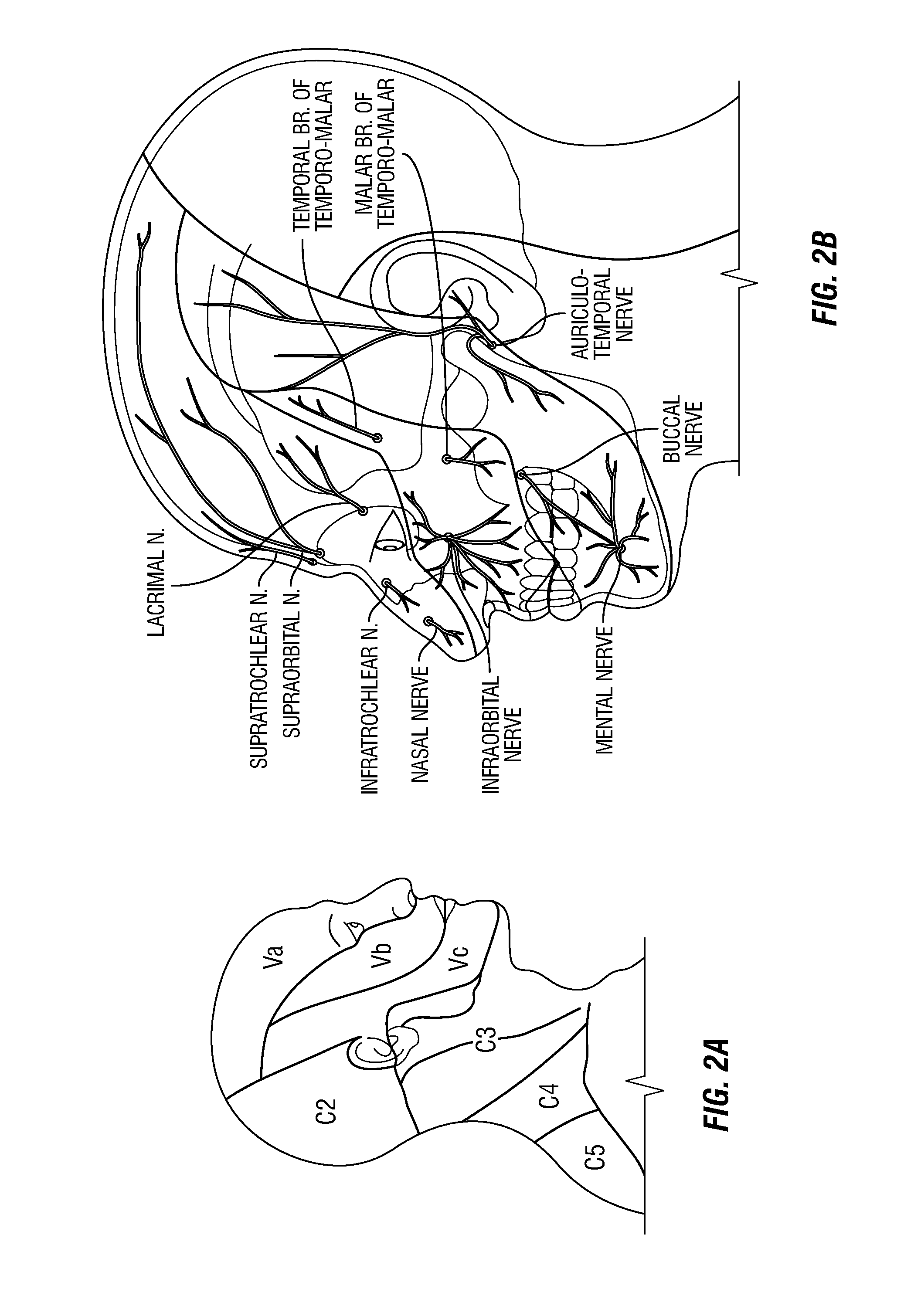Methods using trigeminal nerve stimulation to treat neurological diseases
a trigeminal nerve and neurodegenerative disease technology, applied in the field of neurodegenerative diseases, can solve the problems of difficult prediction of efficacy of any given disorder, and difficulty in predicting precise stimulation parameters that would energize particular pathways that affect the particular disorder
- Summary
- Abstract
- Description
- Claims
- Application Information
AI Technical Summary
Problems solved by technology
Method used
Image
Examples
Embodiment Construction
[0012]Representative embodiments describe methods to provide stimulation to cranial nerves, peripheral nerves or branches associated with the head and face and / or dermatome areas associated with the head and / or face. The neural stimulation can be provided in combination with an event, for example, an auditory signal can be applied simultaneous or substantially simultaneously while the neural stimulation is occurring to potentially enhance neural plasticity, prevent habituation, or basically enhance efficacy of the treatment protocol or regimen for a neurological disorder.
I. Stimulation Sites
[0013]Cranial nerves are components of the peripheral nervous system that are attached to the brain, rather than the spinal cord. Some cranial nerves relay information from the sense organs to the brain; other cranial nerves control muscles and yet other cranial nerves are part of the autonomic system and relay information to glands or internal organs, such as the heart and lungs.
[0014]Cranial ne...
PUM
 Login to View More
Login to View More Abstract
Description
Claims
Application Information
 Login to View More
Login to View More - R&D
- Intellectual Property
- Life Sciences
- Materials
- Tech Scout
- Unparalleled Data Quality
- Higher Quality Content
- 60% Fewer Hallucinations
Browse by: Latest US Patents, China's latest patents, Technical Efficacy Thesaurus, Application Domain, Technology Topic, Popular Technical Reports.
© 2025 PatSnap. All rights reserved.Legal|Privacy policy|Modern Slavery Act Transparency Statement|Sitemap|About US| Contact US: help@patsnap.com



